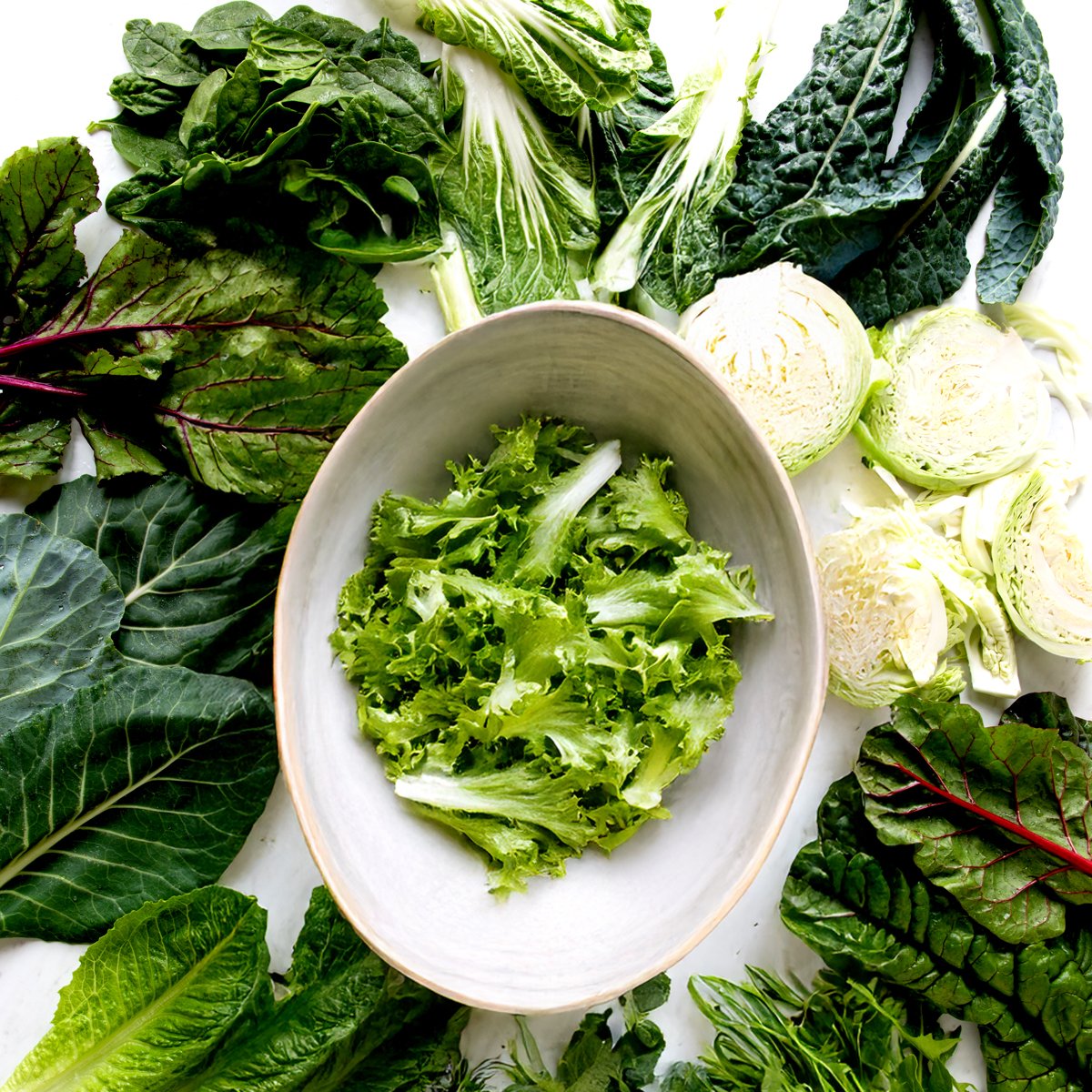
This post may contain affiliate links, meaning I can earn a small commission from items you purchase (at no cost to you).
Table of contents
Step aside salad. You’re no longer the only way to get leafy green vegetables into our diet. The following nutritional powerhouses deserve a starring role in any kitchen— not just for a trained chef. Packed with vitamins, minerals, and antioxidants, leafy greens offer a wealth of health benefits and surprising versatility in the kitchen.
I started my love affair of leafy greens with blending baby spinach into my smoothies. Over time, I started to crave more leafy green vegetables. From vibrant stir-fries to hearty plant-based soups and even delicious green smoothies, it’s time to look beyond the bowl and discover the exciting world of cooking and blending with leafy greens.

Health Benefits of Leafy Green Vegetables
Leafy greens are super important for a healthy diet. They’re nutrient-dense, green veggies that provide tons of vitamins and minerals. According to a report in the journal Neurology, a daily serving of leafy greens can lead to slower age-related cognitive decline. The term “leafy greens” encompasses a wide array of edible leaves, each with its unique flavor profile and texture. Getting familiar with the leafy green varieties is the first step to unlocking their culinary potential.
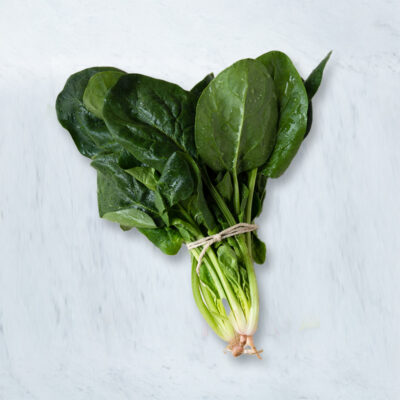
Spinach
Mild & slightly sweet
Spinach is a nutritional powerhouse, packed with vital vitamins (K, A, C), folate, and iron, crucial for bone health, vision, immunity, cell growth, and red blood cell production. Its high antioxidant content and plant compounds may also lower the risk of chronic diseases, making it a valuable addition to a healthy diet.
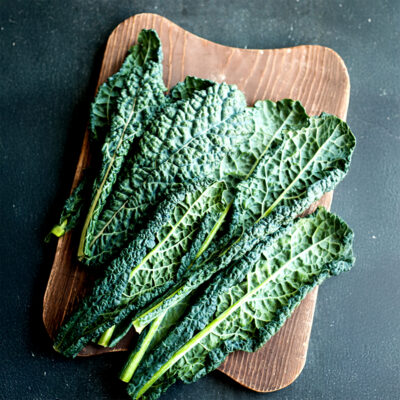
Kale
Hearty & slightly bitter
Kale has different varieties like curly kale, Lacinato (dinosaur) kale, and baby kale offer varying textures. With 684% of the recommended daily value of vitamin K, 206% of the RDV of vitamin A and 134% of the RDV of vitamin C, this dark leafy green packs a health punch.
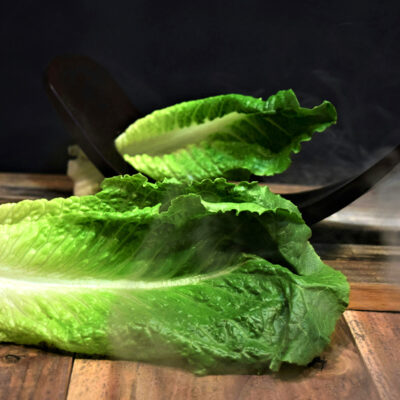
Lettuce (Romaine, Butter, Iceberg)
Mild & slightly sweet
Primarily used raw for salads and wraps, some firmer varieties like romaine can be lightly grilled or braised. Romaine lettuce is high in fiber and low in calories. The vitamin C and beta-carotene content help to lower cholesterol and prevent build-up on artery walls, which reduces the risk of a heart attack.

Arugula (Rocket)
Peppery & slightly bitter
Arugula adds a zesty kick to salads and cooked dishes. More than just a garnish, one cup of this leafy green contains 27.7% of the RDV of vitamin K. Tastes best on top of pizza, in a salad or sandwich. I don’t recommend making smoothies with it.
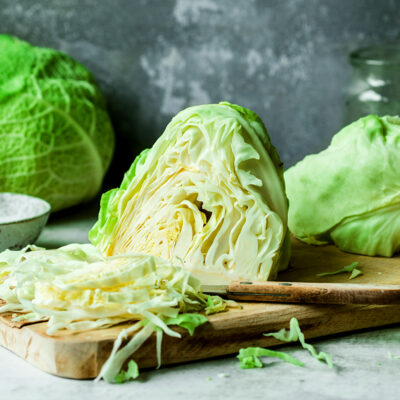
Cabbage
Hearty & pungent
This leafy green can actually be purple, red, white or green, but is definitely still considered a leafy green. I love using cabbage as a plant-based taco shell, blended in a cabbage smoothie or roasted cabbage with light seasoning. Loaded with fiber, folate, vitamin B6 and antioxidants which help fight inflammation.
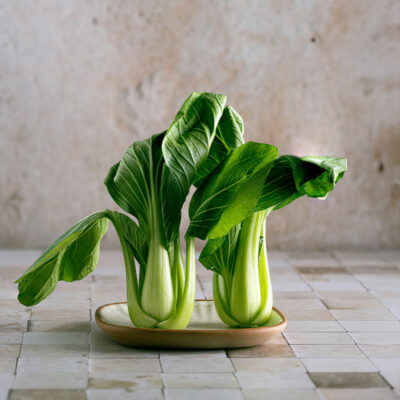
Bok Choy
Mild & slightly sweet
Bok choy is excellent stir-fried, steamed, or added to soups. Full of vitamins A and C, bok choy ranks high for nutrient density as well. All parts of the plant can be used: shredded in a salad, my vegetarian ramen, cooked in soup or blended in a smoothie.
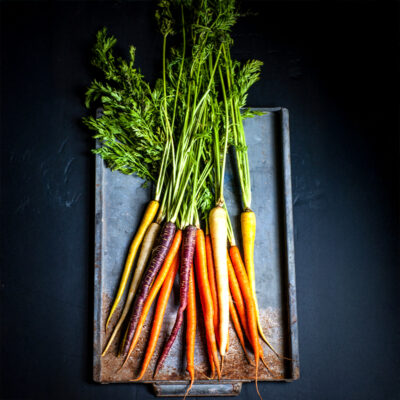
Carrot Greens
Herbaceous & slightly bitter
Carrot tops offer surprising nutrition, providing vitamin K for blood clotting and bones, vitamin C for immunity, and potassium for blood pressure regulation. Their phytonutrients also offer potential anti-inflammatory and antioxidant benefits, making them a worthwhile to smoothies or even pesto!
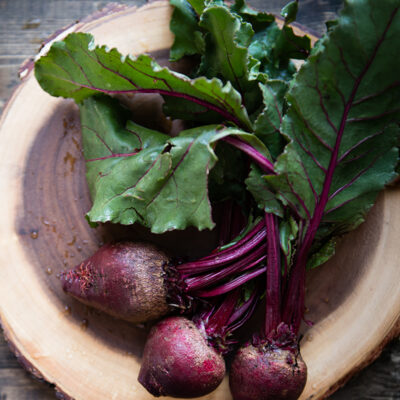
Beet Greens
Slightly earthy
Beet tops are a nutritious leafy green, rich in vitamins K and A, vital for blood clotting, bone health, vision, and immunity. High in phytonutrients, including betalains, beet greens have anti-inflammatory benefits. When blending smoothies with beets, wash and blend in the beet greens.
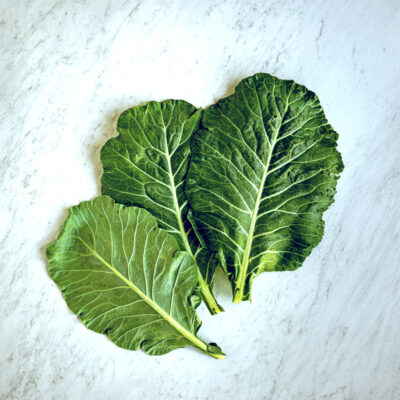
Collard Greens
Tough & slightly bitter
Collard greens benefit from long cooking times. Like their other cruciferous family members, collard greens are great cancer fighters. They are also pretty good at helping your body digest foods properly with all the fiber inside. They are most popular steamed, but adding them raw to your smoothies will provide greater health benefits.
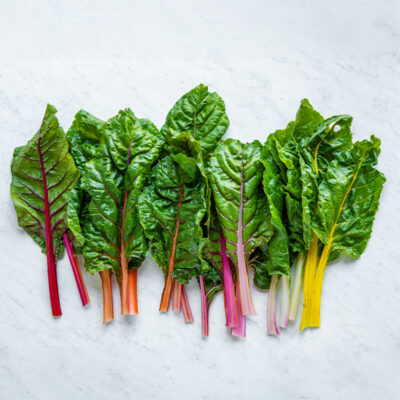
Swiss Chard
Mild & slightly earthy
Mild and slightly earthy with colorful stems that are also edible, Swiss chard is a beautiful and nutritious addition to many dishes. Chard is a colorful, dark leaf known for its ability to regulate the body’s blood sugar. Translation? If diabetes or maintaining blood sugar levels is a concern, add this veggie to your regular rotation.
Leafy Greens Recipes
5 Ways to Use Leafy Greens
Ready to move beyond the traditional salad? Here are some inspiring ways to incorporate more leafy greens into your daily meals:
- Sautéed and stir-fried: Spinach, baby kale, and Swiss chard wilt beautifully in a hot pan with a little olive oil, garlic, and a pinch of salt and pepper. A squeeze of lemon adds brightness. Heartier greens like kale, mustard greens, and bok choy hold up well in stir-fries. Add them towards the end of cooking to maintain some texture and vibrant color. Pair them with your favorite proteins, vegetables, and sauces.
- Soups for warmth and nutrition: Stir in chopped spinach, kale, or Swiss chard during the last few minutes of cooking vegetable soup recipes. They will wilt down and add a boost of nutrients and a touch of freshness. Blend cooked greens like spinach or kale with broth, sautéed onions, and a touch of cream or coconut milk for a smooth and nutritious soup.
- Baked delights with a green twist: Incorporate chopped leafy greens into egg-based dishes like quiches and frittatas. They add color, flavor, and valuable nutrients. Layer sautéed greens into pasta bakes and lasagnas for an extra dose of vegetables. They blend seamlessly with the other ingredients. Add finely chopped cooked greens to roasted root vegetables, or use them as a filling for savory pastries and dumplings.
- Blended goodness in smoothies: Don’t be afraid to toss a handful of spinach or kale into your breakfast smoothie. The flavor is surprisingly mild when combined with fruits, yogurt, and other ingredients.
- Creative raw preparations: While not technically a recipe, juicing leafy greens is a great way to consume a concentrated amount of nutrients. Blend arugula, spinach, or kale with nuts, garlic, olive oil, and lemon juice for a vibrant and flavorful pesto. You can also layer large lettuce leaves like romaine or butter lettuce to create healthy and delicious lettuce wraps and sandwiches.
Benefits of Rotating Leafy Greens
I often talk about rotating your greens when making green smoothies. This is because leafy greens come from all different plant families, each offering different health benefits. Yet if spinach is your jam, no worries! Keep doing that. You can always have a salad with kale or make a soup with Swiss chard.
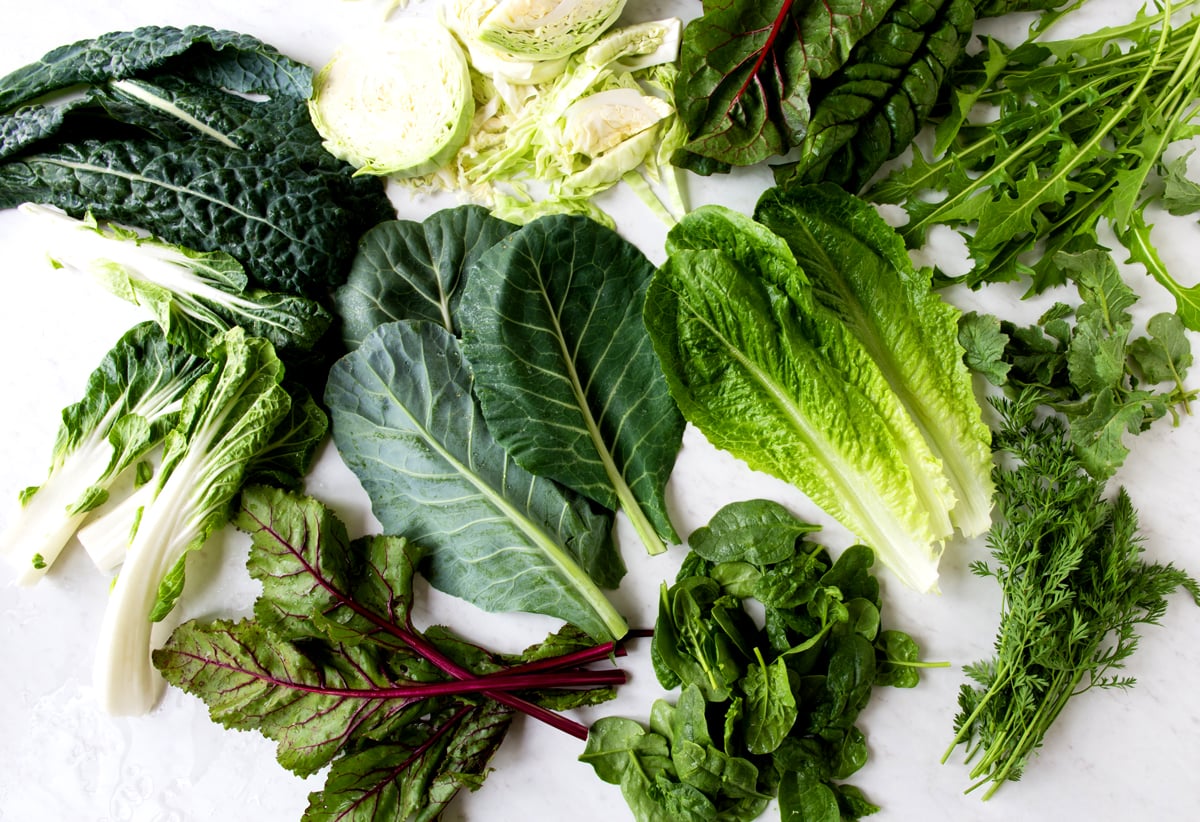
Tips for Cooking with Leafy Green Vegetables
Leafy greens are more than just a salad component. Their versatility and nutritional benefits make them a valuable addition to any healthy diet. By exploring different cooking methods and incorporating them into a variety of dishes, you can unlock a world of flavor and boost your well-being. So, step away from the salad bowl and embrace the green revolution in your kitchen!
- Experiment! Don’t be afraid to try different combinations and cooking methods to discover your favorite ways to enjoy leafy greens.
- Wash thoroughly: Always wash leafy greens thoroughly under cold running water to remove any dirt or grit. A salad spinner can be helpful for drying them.
- Remove tough stems: For heartier greens like kale and collards, remove the tough central stems before cooking.
- Don’t overcook: Most leafy greens cook quickly. Overcooking can make them mushy and reduce their nutritional value.
- Balance flavors: The bitterness of some greens can be balanced with acidic ingredients like lemon juice or vinegar, or by pairing them with sweeter or richer flavors.
What are your favorite leafy greens? Drop a comment below and let me know if this list has inspired you to try a new ingredient, or if you’ve got a new green for me to try!
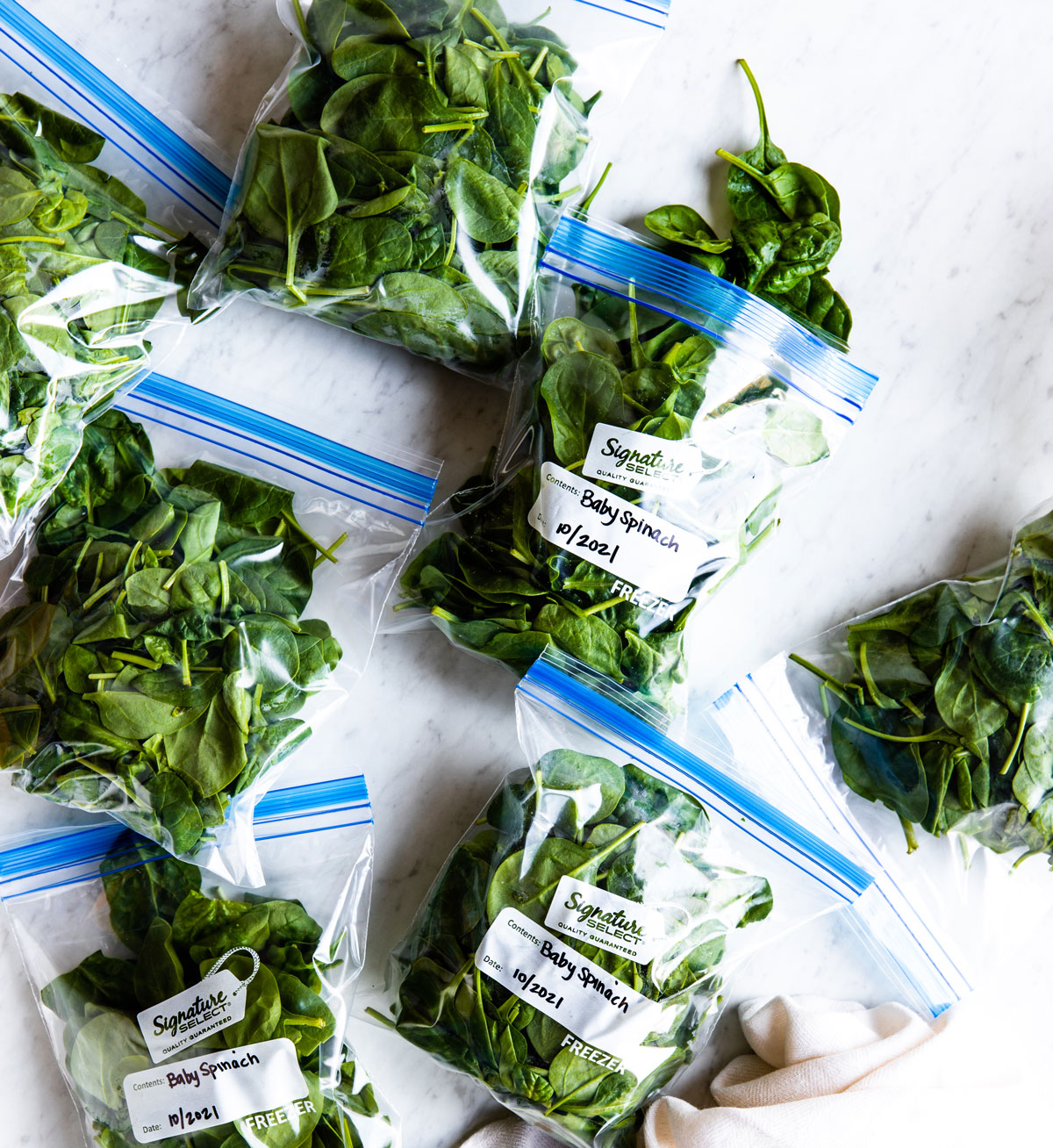
Freezing Your Leafy Greens
Ever wonder how to use up all the beautiful leafy greens you just bought, before they start to wilt? Even though I make green smoothies daily, I sometimes need to freeze my spinach or kale to stay fresh longer.
To lengthen the shelf life of leafy greens and make rotating your greens as easy as opening your freezer, try freezing your spinach. I buy spinach and power greens at Costco— freezing half of it maximizes the freshness.
Common Questions
You’ve probably heard of spinach, kale and lettuce, but leafy greens also include carrot tops, beet greens, swiss chard, arugula and more! They can grow all on their own, or be found on the tops of other plants (like broccoli, beets and carrots).
All leafy greens are incredibly nutritious and great to mix into your diet. Kale and spinach are probably the most nutrient-dense, yet you need a variety of greens (and other fruits and vegetables) for the best health. Don’t be afraid to give a new one a try next time you’re at the store. You might be surprised by mustard greens, bok choy and more!
Greens don’t just take place in salads or garnishes for burgers. You can use them in green smoothies, all kinds of pesto, filling for stuffed mushrooms or potatoes. Pretty much anything you want! Next time you are grocery shopping, grab a new-to-you leafy green and get adventurous with how you prepare it.
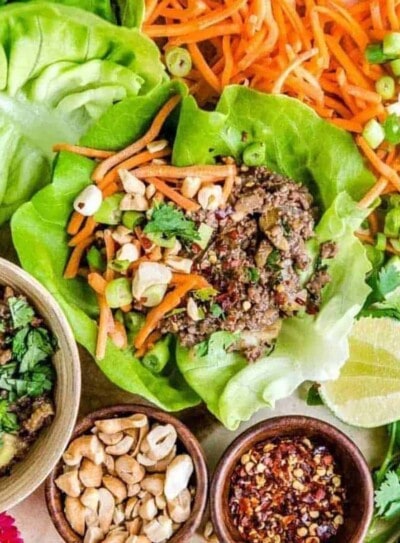
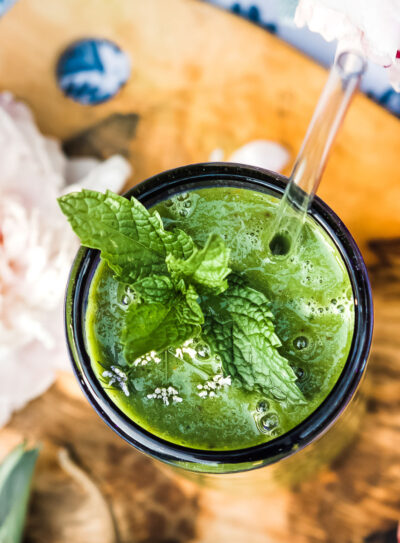


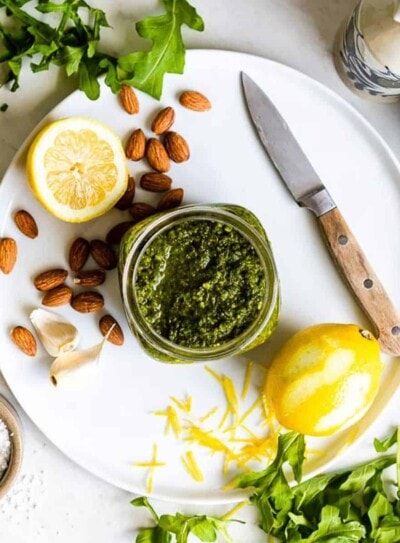
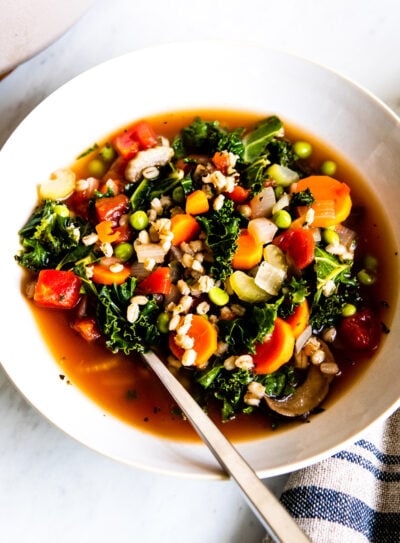

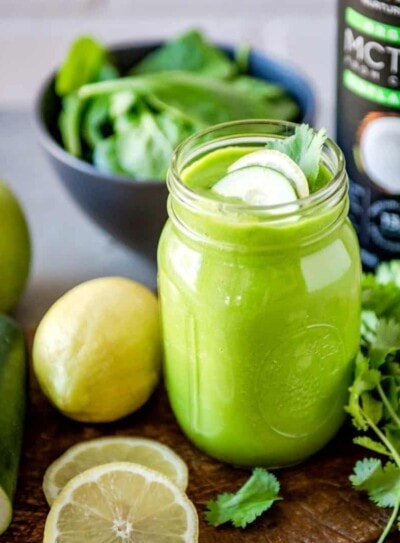
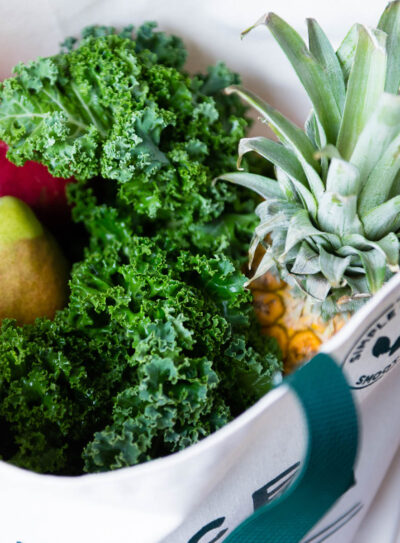


Started having smoothies daily for diagnosis of MS, question though, should I be peeling veggies and what about ginger?
Hi Jill, I usually don’t peel veggies or ginger. In my opinion it doesn’t make a difference and is a waste of time. The only think I can think of to consider peeling are beets. Hope this helps!
I enjoy blending spinach, kale and parsley together every day, and changing the fruit (sometimes bananas, sometimes mangos, sometimes apples, etc.) and liquids (sometimes almond milk, sometimes coconut water). Will this create alkaloid buildup?
Hi Katie!
The best thing is for you to be conscious about it, and you should be fine 🙂 We can’t really say for individuals what will or will not happen.
O-oh, I have been having spinach every day in my smoothie after being told I should avoid cruciferous vegetables due to an overactive thyroid. I will have to try and alternate with romaine and others. Thanks for the tip!
Hi Kerry!
If you’ve had a physician tell you to avoid them, then please listen to them! This article is not written specifically for someone with an overactive thyroid.
Great info.love drinking these smoothies everyday.thanks
Vijaya
What’s the best way to measure the greens? Should it be 2 cups packed like brown sugar? Or loosely like flour?
Hey Bree—we pack the greens in! The more the merrier. 🙂
I just want to start by saying I love this website and following you ladies on IG. I have a Ninja blender and this week I have been adding Curly Kale this week to my smoothies. Yesterday, I added 1 leaf and today, I added 2 leaves of the Kale. Today I felt like I was constantly chewing the Kale. And I ended up blending it a second time to get the Kale smaller but I was still chewing it. Any suggestions on how to blend the Kale better? I blended the Kale w/ frozen blueberries, a handful of strawberries chopped, greek yogurt and added water. I also added additional water to try to assist with the blending of the Kale.
Great question, Megan. 🙂
You definitely want to always blend your greens and liquid base first until it nice and smooth. Then add the remaining ingredients and blend agin. This post should also help:
https://simplegreensmoothies.com/how-to-make-a-smoothie
Try a better blender, my Vitamix Professional 750 has no such problem, silky smooth smoothies every time
Im sure the Ninja is perfectly suitable. (A definite contender for the price!!) even some vitamix users will say to blend the greens with water/liquid first. I’m just starting out, with a Ninja might I add, & so far so good as long as I blend those greens first 🙂 (with spinach I’ve had plenty of success without pre blending as well)
I’ve been making green smoothies for the past week and I love them! I have only tried spinach. I have a picky eater on my hands. Ironically, it’s not my toddler. It’s my husband! I was wondering. Have you ever tried mustard greens? Are they very strongly flavored? My husband doesn’t really mind the spinach but I’m nervous that he won’t want to drink a smoothie with any other greens. Thanks!
Hi Megan!
Mustard greens have a pretty strong flavor. What about kale? Kale and spinach are two of our favorites!
Thanks for the long list of greens!
I wouldn’t have thought of using cabbage…
I was wondering if putting herbs in was ok? I guess it is – just adjust according to taste?
You sure can put herbs, Anneri 🙂 We would prefer to still use about two cups of regular leafy greens and using a handful of herbs. They can be pretty strong compared to leafy greens!
Im a lactating mom..can i take green smoothie..i would like to use cucumber,celery,lemon and some apples..and how often can i take green smoothies..
In most cases it is a good thing to eat healthy foods while breast feeding (i.e. leafy greens, fruits, veggies) so green smoothies could totally be beneficial to you and your little one. Try not to eat anything 30 minutes before or after your green smoothie to allow the fruits to digest in your body quickly. But to be on the safe side, we would recommend speaking to your personal health care provider to see if they recommend any foods to avoid. We like having 16 ounces (or two cups) per day! Hope that helps! 🙂
I love to rotate my Veggies or mix them up in my green smoothies! The one that I dislike most (for blending) is Mustard Greens … The taste was way too intense!
Ya… The taste is pretty distinct 🙂
Hi, I been drinking green juice for over two months and I notice what you mention tingling on my fingers. My base for liquid is always cucumber, celery, carrots, and then I add leafy greens, kale, beets, parsley, cilantro what ever greens I have. Do I need to stop drinking them please help, I do suffer from thyroid , please help.
Hi Diana,
The best thing we can recommend is to see a nutritionist or doctor. Neither of us are qualified to diagnose you, and it is always better to have an in person consultation. Please let us know what your physician says if you do go!
I have been making a blender full of green smoothie every morning, having a glass and putting the rest in mason jars in the fridge. I have another smoothie around lunch and MAYBE one around dinner. My green smoothies have a blender full of greens (usually spinach or kale), liquid, fruits, and veggies. Is drinking them as often as i do dangerous in any way? Basically, I have about 3 mason jars of green smoothie a day. I love them!
Hi Ellen!
There are two main suggestions we would make:
1) Make sure you are using a variety of fruits, veggies, superfoods, liquids, etc. Having a variety will give your body the variety of nutrients it needs 🙂
2) Make sure to switch your greens up every now and then. There shouldn’t be too much to worry about, but build-up can happen if you use the same greens every single day for months at a time 🙂
I tried the beginners luck smoothie today and I have to say I was surprised, it’s actually not so bad. Can’t wait to try some different stuff, although I might stick to spinach a little longer. I can’t find kale in my area, so I might just substitute it with what I have.
Way to go! Keep it up, Blanca!
Hi Girls! I’m up to day 18 of the challenge YAY!! But the last few days I’ve felt a bit squirmy in the stomach and just a bit sick and tired. I don’t think it’s a virus so do yu think it could be an alkaloid build up? I have spinach most days but have had the occasional kale or broccoli base.
It probably isn’t alkaloid build-up. Try to be drinking lots of water. If you haven’t had a high intake of leafy greens before doing the challenge then it can take your stomach a bit to re-adjust 🙂
I just wanted to say “You Rock”! I am so happy for you and that is really so awesome that you are up to day 18. You are an inspiration to myself and I am sure many others. Keep up the Great Work Rochelle.
Thank you for sharing this with us!
Cheryl …
My grocery sells an organic spring mix that contains the following: Tango, Lolla Rosa, Red and Green Romaine, Red and Green Oak, Red and Green Chard, Spinach, Mizuna, Radicchio, Frisee, Beet Greens, Arugula, Tatsoi, and Red Mustard.
This spans several groups of greens and has things that aren’t even on the list. If I stick with this every day (I really like it), can I avoid rotating greens? I would seem like an easy solution. Most salad mixes aren’t very green, but this particular seems to pack a lot of punch.
It would probably be better than sticking with just one green constantly, but we still think the best idea is to rotate through different greens one at a time 🙂
Hey Grirls!
I’m joining the 30 Day challenge. Today I found savoy cabbage St my farmer. Any Suggestionen for it? Can I use it for my smoothies?
I’m a little afraid of bloating up… You know… ahem…
Nice greetings from Germany!
Stefanie
Hey Stefanie! I’ve added cabbage to my smoothies before– try to do 1 cup spinach with 1 cup cabbage to help keep the taste mild. 🙂
That`s what I did! Thank you for answering my question!
I love the challenge, though all people around me can`t understand why I`m drinking ugly, disgusting greens drinks… I love them!